 |
 |
 |
| |
More than half of well-treated persons living with HIV have angiography verified coronary artery disease
Angiography Confirms Coronary Artery Disease in Over Half With HIV in Copenhagen
|
| |
| |
18th European AIDS Conference, EACS 2021, October 27-30, 2021, London
Mark Mascolini
More than half of a middle-aged HIV group in Copenhagen had coronary artery disease confirmed by state-of-the-art coronary computed tomography angiography (CCTA) [1]. Longer time since HIV diagnosis predicted both presence of atherosclerosis and more severe atherosclerosis in this 705-person study.
Because of classical and HIV-related risk factors, people with HIV run a higher risk of cardiovascular disease than the general population. CCTA, a noninvasive imaging tool, accurately assesses coronary artery disease. The Copenhagen researchers noted that previous CCTA studies found coronary artery plaques in 53% to 78% of middle-aged people with HIV, with the highest rates in North American populations.
The new study aimed to chart rates of CCTA-detected coronary artery disease in a large cohort of people responding well to antiretroviral therapy and to pinpoint factors independently associated with coronary artery disease. The study group came from an ongoing cohort of HIV-positive people in Copenhagen, the Copenhagen Comorbidity in HIV Infection (COCOMO) study. All cohort members were offered CCTA, and all who agreed had their 640-slice scan done by the same scanner.
The 705 people who took part in the study had a median age of 50 (interquartile range 43 to 58), 89% were men, and 27% current smokers. While 42% had hypertension, 19% had abnormal lipids, and 3% had diabetes. Almost all study participants, 99%, were taking antiretroviral therapy, and 96% had an undetectable viral load.
CCTA results are interpreted by the CAD-RADS system, with scores indicating lack of stenosis, though minimal, mild, moderate, and severe stenosis, to total occlusion. Just under half of the study group, 46%, had no atherosclerosis or stenosis, while the remaining participants had some CCTA evidence of stenosis: 14% minimal stenosis, 13% mild stenosis, 8% moderate stenosis, 5% severe stenosis, 2% total occlusion, and 10% maximal stenosis unknown.
Regression analysis adjusted for age, sex, hypertension, diabetes, and smoking status linked 5 non-HIV variables to presence of stenosis: every older decade of age (adjusted odds ratio [aOR] 3.22, 95% confidence interval [CI] 2.55 to 4.06, P < 0.001), male sex (aOR 2.44, 95% CI 1.26 to 4.73, P = 0.008), hypertension (aOR 1.58, 95% CI 1.06 to 2.34, P = 0.023), current smoking (aOR 1.71, 95% CI 1.06 to 2.76, P = 0.028), and body mass index above 30 kg/m2 (obesity) (aOR 3.53, 95% CI 1.53 to 8.11, P = 0.003).
Five non-HIV variables independently predicted more severe coronary artery disease: every additional decade of age (aOR 2.96, 95% CI 2.46 to 3.59, P < 0.001), male sex (aOR 1.96, 95% CI 1.03 to 3.87, P = 0.037), hypertension (aOR 1.80, 95% CI 1.15 to 2.37, P = 0.001), diabetes (aOR 2.86, 95% CI 1.06 to 7.69, P = 0.006), and current smoking (aOR 2.06, 95% CI 1.32 to 3.21, P = 0.001).
Regression analysis adjusted for the same variables tied two HIV-related factors to CCTA detection of atherosclerosis: every additional 5 years since IHV diagnosis (aOR 1.20, 95% CI 1.06 to 1.35, P = 0.004) and (marginally) protease inhibitor use (aOR 1.46, 95% CI 0.95 to 2.23, P = 0.081). Factors not associated with atherosclerosis detection in this analysis were nadir CD4 count below 200, abacavir use, and ever using zidovudine, indinavir, or didanosine. Among people who had CCTA-detected atherosclerosis, five HIV variables independently predicted worse coronary artery disease: each additional 5 years since HIV diagnosis (aOR 1.23, 95% CI 1.11 to 1.36, P < 0.001), protease inhibitor use (aOR 1.43, 95% CI 1.01 to 2.03, P = 0.043), ever using zidovudine (aOR 1.65, 95% CI 1.17 to 2.33, P = 0.004), ever using didanosine (aOR 1.65, 95% CI 1.04 to 2.60, P = 0.031), and ever using indinavir (aOR 1.95, 95% CI 1.28 to 2.95, P = 0.002).
In this analysis of HIV-related risk factors, no HIV variable predicted coronary artery disease after further adjustment for time since HIV diagnosis.
Reference
1. Knudsen AD, Fuchs A, Benfield T, et al. More than half of well-treated persons living with HIV have angiography verified coronary artery disease. 18th European AIDS Conference, EACS 2021, October 27-30, 2021, London. Abstract BPD3/2.
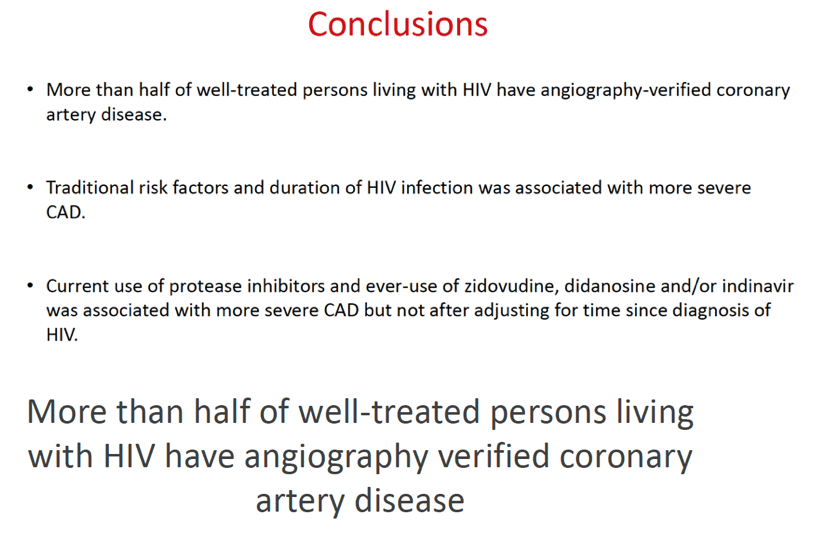
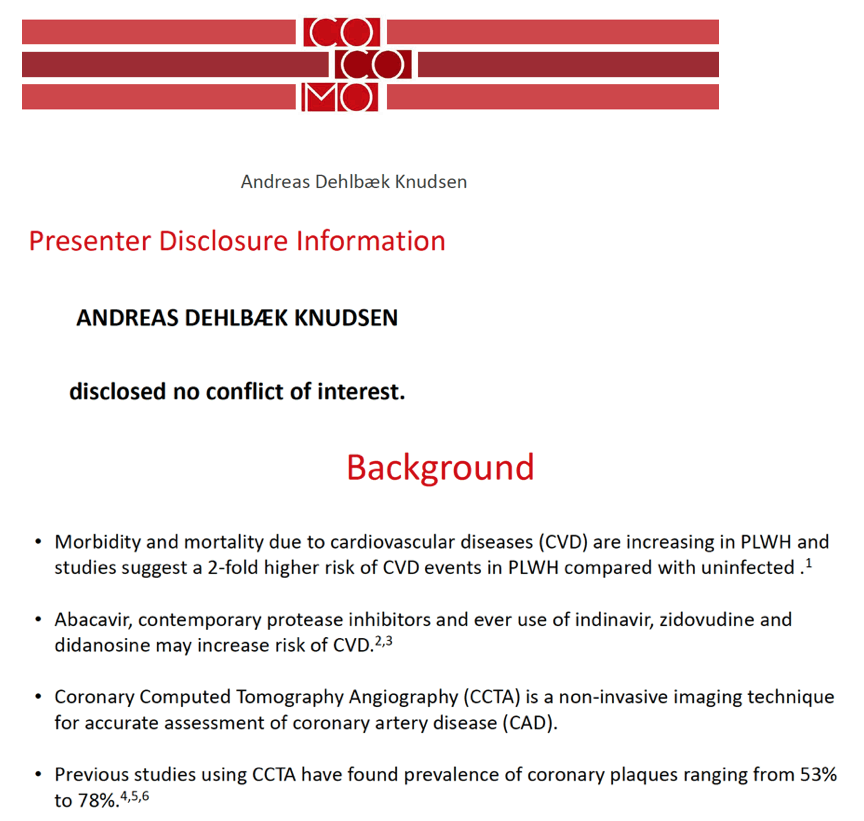

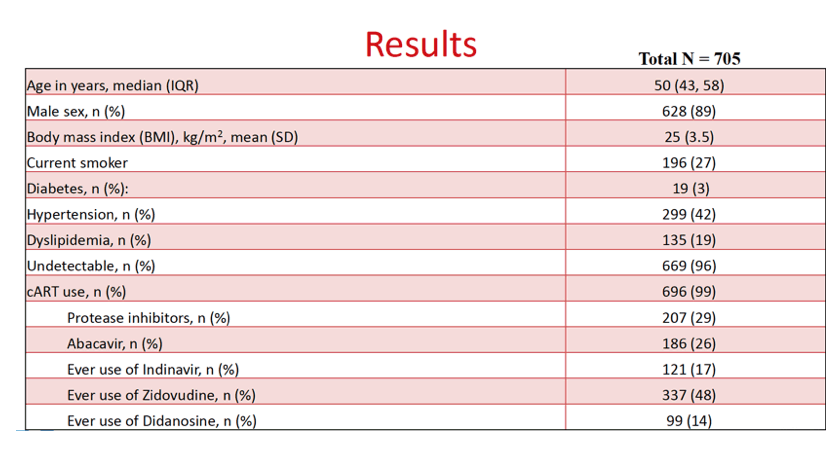
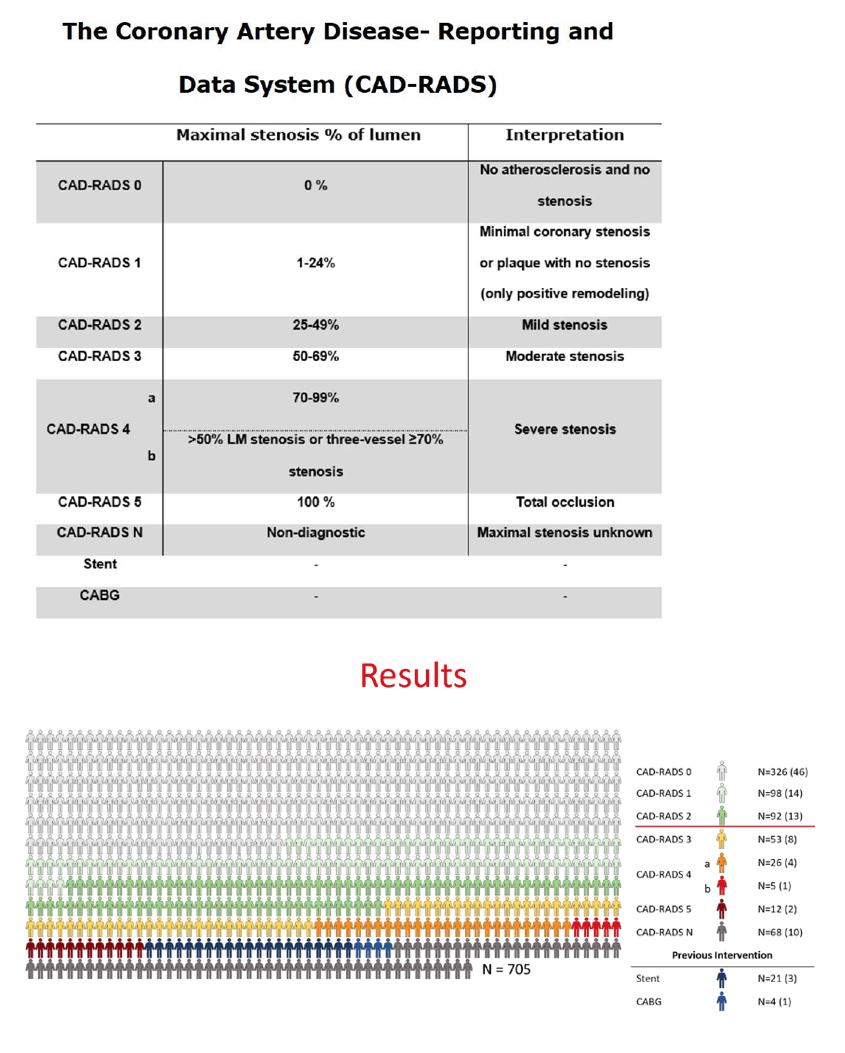

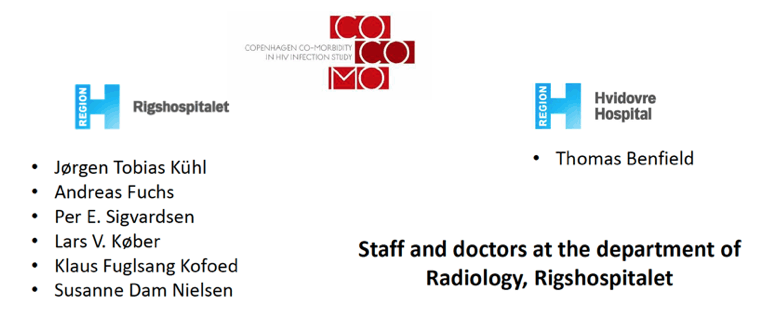
|
| |
|
 |
 |
|
|